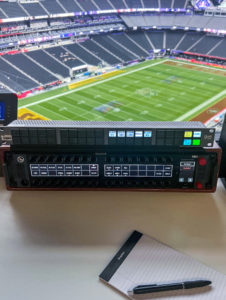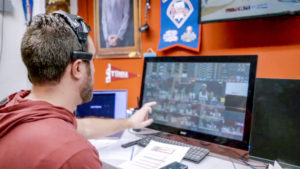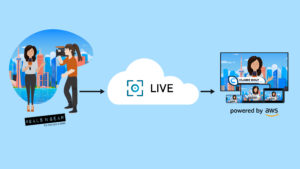Black Box – KVM Trends in the Broadcast industry

Tom Fitzgerald, KVM Product Manager, Black Box
Internet Protocol (IP)
IP is a fundamental component of modern computer networking and internet communication. Technical staff need to be familiar with IP to effectively manage, troubleshoot, and optimize networked systems and services in a wide range of technical disciplines. For this reason, IP is the accepted Protocol for almost all information transfer, including KVM, which allows remote access and control of servers and devices over standard IP networks. KVM enables efficient management of remote equipment, which makes it ideal for live events, news and sports, where systems and operators are often located in OB vans at remote locations.
The Broadcast industry led and shaped the direction of KVM over IP development in many ways. As the industry embraced remote production, IP-based workflows, and virtualized environments, the demand for efficient and flexible remote access solutions grew, further motivating the development of KVM over IP. The technology evolved in response to the changing needs and challenges faced by broadcasters in managing and controlling their equipment and systems efficiently, securely, and remotely. As the broadcasting landscape continues to change, KVM over IP technology is likely to continue to advance to meet the demands of the industry.
Virtualized and cloud-based solutions
Broadcasters have embraced virtualized and cloud-based solutions. Virtualization allows more efficient resource allocation, while the cloud offers scalability and cost savings, enabling broadcasters to handle peak demands and reach wider audiences. KVM solutions are now integrated with virtualization technologies, such as VMware and Microsoft Hyper-V, and users need seamless access between physical and virtual machines. PCoIP is a protocol that has been adopted quickly by the Broadcast industry, since it provides a seamless and high-quality user experience when accessing virtual desktops or workstations over various network conditions, including LAN, WAN, and even the internet. This has driven leading KVM suppliers, such as Black Box®, to develop KVM user stations that allow direct access to Virtual Machines using RDP and PCoIP, as well as to physical machines.
KVM switching and extension for high-resolution displays
With the rise of high-resolution displays, a demand for KVM over IP solutions with support for 4K with 8K video resolutions also occurred. KVM manufacturers are developing products that can handle such high-quality video streams while using as little bandwidth as possible and providing the user with a virtually latency free experience.
KVM product development influences
The Broadcast industry requires top class production talent, and it is critical that this staff be able to work as efficiently as possible. Consequently, product development is tailored to address workplace needs.
Here are some examples that drive the KVM product development:
- Remote Production and At-Home Workflows: The pandemic accelerated the adoption of remote production workflows. Broadcasters continue to explore cost-effective ways to produce content remotely, leveraging cloud-based technologies and collaborative tools. Ideally, this means staff members travel less. KVM manufacturers are responding to this need by giving a perfect user experience using ultra low bandwidth. This bandwidth will continue to be driven down at higher resolutions.
- Workflow Integration: KVM capabilities are influencing user workflows, and the KVM system needs to switch automatically as the user carries out tasks while being completely seamless to the user. We see the trend today, as the Black Box Emerald® System integrates with various control and monitoring systems, such as Lawo’s Virtual Studio Manager (VSM).
- Personalized Workspaces: In Production Studio control rooms users typically need to monitor and interact with many different systems at the same time, including information provided by servers, Virtual Machines, and cameras. This requirement is driving the development of personalized workspaces and multi-source KVM systems, such as the Black Box Emerald®
Artificial Intelligence and IoT
Artificial Intelligence is being integrated into various aspects of broadcasting, such as content creation, metadata enrichment, automated transcription, and video analysis. AI-powered tools help broadcasters manage and monetize their vast content libraries effectively. KVM manufacturers are also exploring ways to integrate KVM solutions with the Internet of Things (IoT) ecosystem. This integration aims to provide more automation and seamless control of devices through interconnected systems and with AI technology, using this information, making decisions, and taking action automatically based on the data. This will provide even more efficient, error free, and secure access to systems. Broadcasting creative content and production staff can increase their productivity without needing to know they are on a KVM or have to take any physical action to view and operate the system they require at any point in time.
KVM over IP benefits
Overall, KVM over IP trends in broadcast highlight its significance in facilitating remote operations, adapting to IP-based workflows, supporting high-resolution content, moving applications to the cloud, and enhancing both security and efficiency in the industry.









